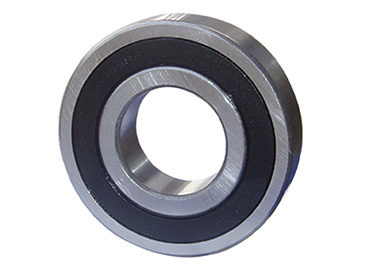Electric motor bearings play a critical role in the smooth and efficient operation of electric motors. In this article, we will delve into the various types of electric motor bearings and their essential characteristics, understanding their significance in powering different applications.

Understanding Electric Motor Bearings
Electric motor bearings are mechanical components that support the rotating shafts within electric motors. They facilitate smooth movement and reduce friction, ensuring the motor operates with minimal resistance and optimal efficiency. Different types of bearings are used in electric motors, each designed for specific applications and operating conditions.
Types of Electric Motor Bearings
1. Ball Bearings
Ball bearings are the most common type of bearings used in electric motors. They consist of steel balls housed within a circular raceway, allowing for smooth, low-friction rotation. Ball bearings are suitable for moderate radial and thrust loads and are widely utilized in various electric motor applications.
2. Roller Bearings
Roller bearings, as the name suggests, use cylindrical rollers instead of balls to support the rotating shafts. These bearings can handle heavier loads and are ideal for applications with higher radial loads. Roller bearings come in different configurations, such as cylindrical, spherical, and tapered, each serving specific purposes in electric motors.
3. Sleeve Bearings
Sleeve bearings, also known as plain bearings or bushings, are simple bearings that consist of a cylindrical sleeve made of materials like bronze or plastic. The rotating shaft makes direct contact with the inner surface of the sleeve, and lubrication is essential to reduce friction and wear. Sleeve bearings are suitable for low-load and low-speed applications.
4. Magnetic Bearings
Magnetic bearings are a more advanced type of bearing that utilizes magnetic levitation to support the rotating shaft. These bearings have no physical contact between the components, leading to minimal friction and wear. Magnetic bearings are commonly used in high-speed and precision electric motor applications.
Characteristics of Electric Motor Bearings
1. Load Capacity
The load capacity of a bearing refers to its ability to support applied loads without failure. It is crucial to choose bearings with the appropriate load capacity to ensure reliable and efficient motor operation.
2. Speed Ratings
Speed ratings indicate the maximum rotational speed that a bearing can handle without experiencing excessive heat generation or premature wear. Choosing bearings with suitable speed ratings is vital for high-performance electric motor applications.
3. Lubrication Requirements
Proper lubrication is essential to reduce friction and prevent damage to bearings. Different types of bearings have specific lubrication requirements, and ensuring proper lubrication enhances their longevity and performance.
4. Noise and Vibration Levels
Electric motor bearings contribute to the overall noise and vibration levels of the motor. Low-noise and low-vibration bearings are preferable, especially in applications where quiet operation is critical.
The Importance of Choosing the Right Bearings
Selecting the right electric motor bearings is crucial for optimal motor performance and longevity. Using inappropriate bearings can lead to premature wear, increased energy consumption, and even motor failure. Factors to consider when choosing bearings include the motor's operating conditions, load requirements, speed demands, and environmental factors.
Conclusion
Electric motor bearings are vital components that ensure the smooth and efficient operation of electric motors. From ball bearings to magnetic bearings, each type offers specific advantages suited for different motor applications. Understanding the characteristics of bearings and their impact on motor performance is essential for making informed choices when selecting bearings for various electric motor setups. By choosing the right bearings, motor manufacturers and users can enhance the reliability, efficiency, and overall performance of electric motors across a wide range of applications.



Comments
Please Join Us to post.
0